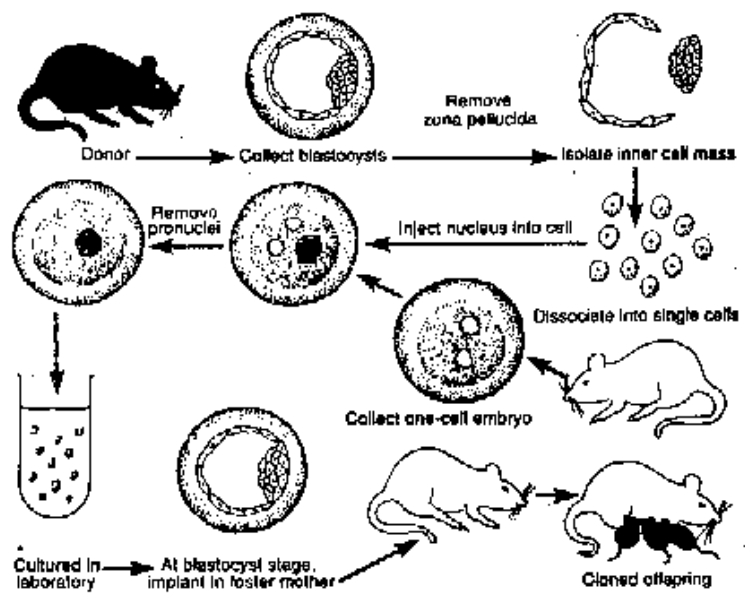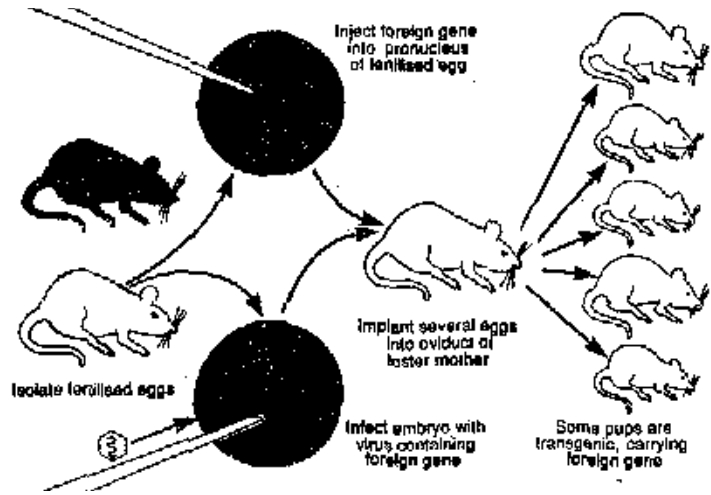 |
Fig. 56: Transplant a nucleus from one embryo to another |
 |
| Fig. 57: Supermice Created by Introducing a Gene for Growth Hormone into a Mouse Embryo |
Clones are individuals that are genetically identical. In theory it should be possible to produce identical copies of yourself: take one of your body cells, remove the nucleus (which contains the genes) and implant this into a one celled embryo which has had its own nucleus removed. Then your genes will control the development of a duplicate of your self.
We can however produce several genetically identical individuals by splitting up the embryo at an early stage. At the eight-cell stage, for instance, each cell can reform a whole embryo. But these approaches produce only a finite number of clones from the embryo. The cloning of mice is shown below:
With the development in genetic Engineering, biologists have preferred techniques for introducing genes from one organism into another organism. The result - a cow, say carrying a human gene among its own genetic material - is called a transgenic animal. The most popular way of producing transgenic animals is to inject genes directly into one of the pronuclic in a newly fertilized egg. This delicate task is performed by holding the egg in a suction tube, piercing the egg and pronucleus with a micropipette to inject the foreign gene. Remarkably this crude procedure works some of the time at least. The foreign gene is permanently incorporate into the genetic material of animal. Some may also damage the host's genetic materials creating what are known as insertional mutations.
In spite of these problems, "microinjections has created many transgenic mammals - including mice, rats, pigs and sheep. The first to emerge from the laboratory, in 1981, were mice carrying a gene for growth hormone. These grew upto 50% larger than their counterparts. Another way to create transgenic animals is to take advantage of viruses (retroviruses) that naturally infect cells. These retroviruses insert their own genes into the genetic materials of a cell. The Genetic Engineers take away the key infecting parts of the retrovirus and add to this foreign gene of their choice. Such a recombinant retrovirus made from artificially combined bits of genes, can then carry foreign genes into the embryonic cells. The embryo is infected with this engineered virus at four or eight cell stage. The difficulty is that virus may not infect all the cells of the embryo. If it infects some of them we get a chimera, that is all cells are not genetically identical. To begin with this technique is being tried to infect the stem cells of bone marrow as a therapeutic intervention in certain blood disorders.[39]
Fig. 57 shows the creation of supermice.
 Prof. Dr. Sohan Raj Tater
Prof. Dr. Sohan Raj Tater
 Doctoral Thesis, JVBU
Doctoral Thesis, JVBU